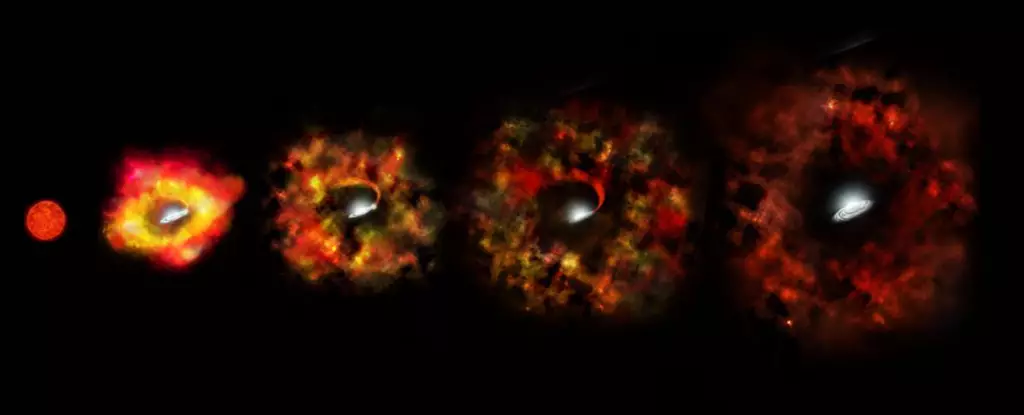In 2009, the astronomical community was captivated by the sudden disappearance of a massive star, N6946-BH1, which had been expected to erupt into a supernova. However, instead of a grand explosion, the star underwent a period of intense brightening, reaching a luminosity equivalent to a million Suns, only to fade away into obscurity. The inability of telescopes like the Large Binocular Telescope (LBT), Hubble, and the Spitzer space telescope to detect any signs of the star led astronomers to believe that it may have collapsed into a black hole instead. This theory, however, has remained largely speculative until now.
Enter the James Webb Space Telescope (JWST), a groundbreaking instrument equipped with the NIRCam and MIRI instruments, designed to observe the universe in unprecedented detail. A recent study published on the arXiv has utilized data gathered by the JWST to shed new light on the enigmatic fate of N6946-BH1. The analysis reveals the presence of a bright infrared source encompassing the original star’s position, suggesting the existence of a remnant dust shell. This finding aligns with the hypothesis that the star expelled material during its rapid brightening phase. While an alternative explanation of the infrared glow stemming from material being consumed by the newly formed black hole remains plausible, it appears less likely.
Surprisingly, the study also uncovers not just one, but three remnant objects in the vicinity. Previous observations of N6946-BH1 had not been able to distinguish these sources, as the resolution of the instruments used was insufficient. This new discovery challenges the previously accepted failed supernova model, instead favoring the possibility of a stellar merger. It appears that what initially appeared to be a single massive star was, in fact, a binary star system that experienced a temporary brightening as the two stars merged and subsequently faded. While the evidence leans towards the merger scenario, the failed supernova model cannot be entirely dismissed at this stage.
This new insight raises compelling questions about the nature of supernovae and the formation of stellar mass black holes. Current understanding suggests that black holes can form as a result of stellar mergers, as demonstrated by observed black hole mergers detected by instruments such as LIGO and other gravitational wave observatories. These observations have revealed that stellar-mass black holes are not only common but also a natural outcome of stellar evolution. However, the precise relationship between supernovae and the formation of stellar mass black holes remains unresolved. While regular supernovae can potentially yield enough remnant mass to form a black hole, it is challenging to comprehend how the largest stellar black holes could have emerged solely through the supernova pathway.
The existence of three remnant sources associated with N6946-BH1, discernible by the JWST despite its distance of 22 million light-years, is a testament to the telescope’s remarkable capabilities. Astronomers are now cautiously optimistic that similar stars with peculiar outcomes will be observed in the future. Further data and analysis will be crucial in distinguishing between stellar mergers and true failed supernovae, ultimately enhancing our understanding of the final stages of stellar evolution as stars gravitate towards becoming stellar-mass black holes.
The vanishing star N6946-BH1 has captivated the astronomical community for over a decade. The recent analysis conducted with the James Webb Space Telescope has revealed intriguing clues about its fate, challenging our previous assumptions about failed supernovae and the formation of black holes. As we continue to explore the cosmos, mysteries like N6946-BH1 remind us that there is still much to unravel in our quest to comprehend the enigmatic workings of the universe.


Leave a Reply